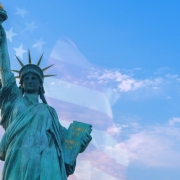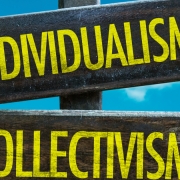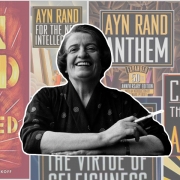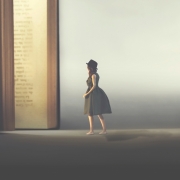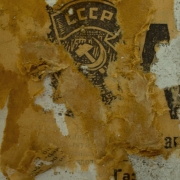The Return of the Primitive, originally published as The New Left: The Anti-Industrial Revolution, is a 1971 collection of essays by Ayn Rand that analyzes the culture, schools, and politics of 1960s America. This was about 50 years after Russia was consumed by class theory criminal gangs, and 50 years before America’s Democratic party was consumed by race theory criminal gangs. Both theories are fatal to the faithful, and fatally flawed to those who obey reality.
The first three chapters in Part II of Ayn Rand’s 1936 novel, We the Living, are a literary description of how avoiding reality appeared to those who lived in 1920’s St. Petersburg, Russia. By 1924, the city had been renamed Petrograd by war, and then Leningrad by committee. The absence of logic in a society dominated by religious, and then political mysticism was illustrated frequently in Chapter 3. For example, Kira’s mother Galina said of her own brother, formerly wealthy by dealing with the reality of the Siberian fur trade, “Vasili has never been practical. What do we do now? We have the complex method.”
Take last week for instance. Our subject was Factory. The history class taught the development of factories. Physics class taught all about machinery. The arithmetic teacher gave problems about production and consumption. The art class drew factory interiors.
Simply put, the minds who invented machinery, the entrepreneurs who created demand, the technical savvy of skilled workers, and the efficiency of complex supply chains had been replaced by bozos. In 2020 America, think Venezuela, Cuba, Minneapolis, and Portland.
What is considered fine art also reflects the dominant culture, and Chapter 3 introduces us to a friend of Leo’s, one he met while spending the summer regaining his health in Crimea. Ayn Rand laughs as Antonina describes a popular, new verse as “thoroughly delightful. Such depth of emotion, yet so – essentially modern: ‘My heart is asbestos that remains cool over the blast furnace of my emotions’ – or something like that – it is really superb.”
Galina had also described the predictable progress of the Method,
Our distribution of commodities has not yet reached a level of perfection. The sunflower seed oil I got last week was so rancid I couldn’t use it. But then, this is a transitional period. Of course, I get a better ration cards because I’m in a preferred class of pedagogues.
Today’s preferred class of pedagogues are pushing their complex method called Critical Race Theory (CRT), which replaces individual talent and lives of meaning with the damaged souls of tribalism. At its core, CRT claims the Western ideals of justice are inherently racist, ethnicity has no biological grounds, and ‘white society’ uses law to handicap non-whites.
This is mind-blowing self destruction, and last week President Trump directed the Office of Management and Budget to issue cease and desist orders where CRT has infected federal agencies. Yet its infestation of corporate America is another matter. Many of them actually fund the race theory criminal gangs that loot and destroy their urban retail stores and innocent small-business owners.
As Kira explained to Andrei at the end of Chapter 3, “It’s possible for every one of us to have to face a death sentence some day. Does it mean we have to prepare for it?” Like too few American corporatists, Andrei knew he was preparing his own possible death sentence, but earlier in Chapter 2, Kira had met Irina’s friend Sasha Chernov, who was anxious to end the Soviet domination and get on with his life,
“Sasha was thrown out of University for trying to think in a country of free thought.” Kira said, “I’m sorry,” feeling that she liked him. Sasha drawled, in a tone of conviction, “It was really not essential. There are some values an autocratic power can never subjugate.”
Lurking in the online forum, Clementine explains,
Sasha knows, and Kira, that there is a sense of self within each individual that a collective can never reach and never control. The University and the Party can try to bring Sasha down and cast him out, but they can’t stop him from thinking and living as an individual.
Kira then asks Sasha,“Aren’t you playing a very dangerous game? The people has claimed too many victims already – of your kind.” Sasha replies, “Russia has a long revolutionary history. They know it. They’re even teaching it in their schools.” Reflecting on 2020 America, The Padre adds,
In the time of COVID, state instrument teachers’ unions are refusing to teach. Parents, who relied on the union teachers to babysit their kids are now contemplating alternatives. They’re an escape from the propaganda mill. Perhaps Sasha was right – there is hope.
It seems Sasha’s naivete is similar to what Kira’s was at the beginning of the novel. He thinks the revolutionary history of Russia will be the downfall of the Soviet insurgents when he asks, “Do you think the Russian worker is a beast that licks its yoke while his mind is begin battered out of him?”
Which brings us to the opening sequence of Part II, and Ayn Rand’s artistic description of St. Petersburg – a manifestation of the human mind, body and spirit in material form, that is being abused in the ensuing chapters.
Peoples know nothing of the spirit of man, for peoples are only nature, and man is a word that has no plural. Petrograd is not of the people. It is a stranger, aloof, incomprehensible, forbidding. Petrograd does not need a soul; it has a mind.
To comprehend the power of Ms. Rand’s depiction of St. Petersburg that “is the work of man that knows what he wants,” Clementine helps the study group by adding,
St. Petersburg did not start with a cathedral to honor God. I remember a TV miniseries about Peter the Great. Asked if he’s naming the city after himself, “No, for the Saint, of course.” Then he gives such a wicked grin that I remember laughing, “yeah, right.”
The criminal gang of Soviets imposed a new religion on Russia’s people, enslaved their bodies, and tried in vain to deface the city that does not need a soul – because it has a mind, as Ayn Rand illustrates in We the Living,
A poster hung high on a wall. On the poster, a huge worker swung a hammer toward the sky, and the shadow of the hammer fell like a huge black cross over the little buildings of the city under its boots.
What today’s race theory criminal gang didn’t learn is that independent minds can not be subjugated by the complex methods of bozos.


